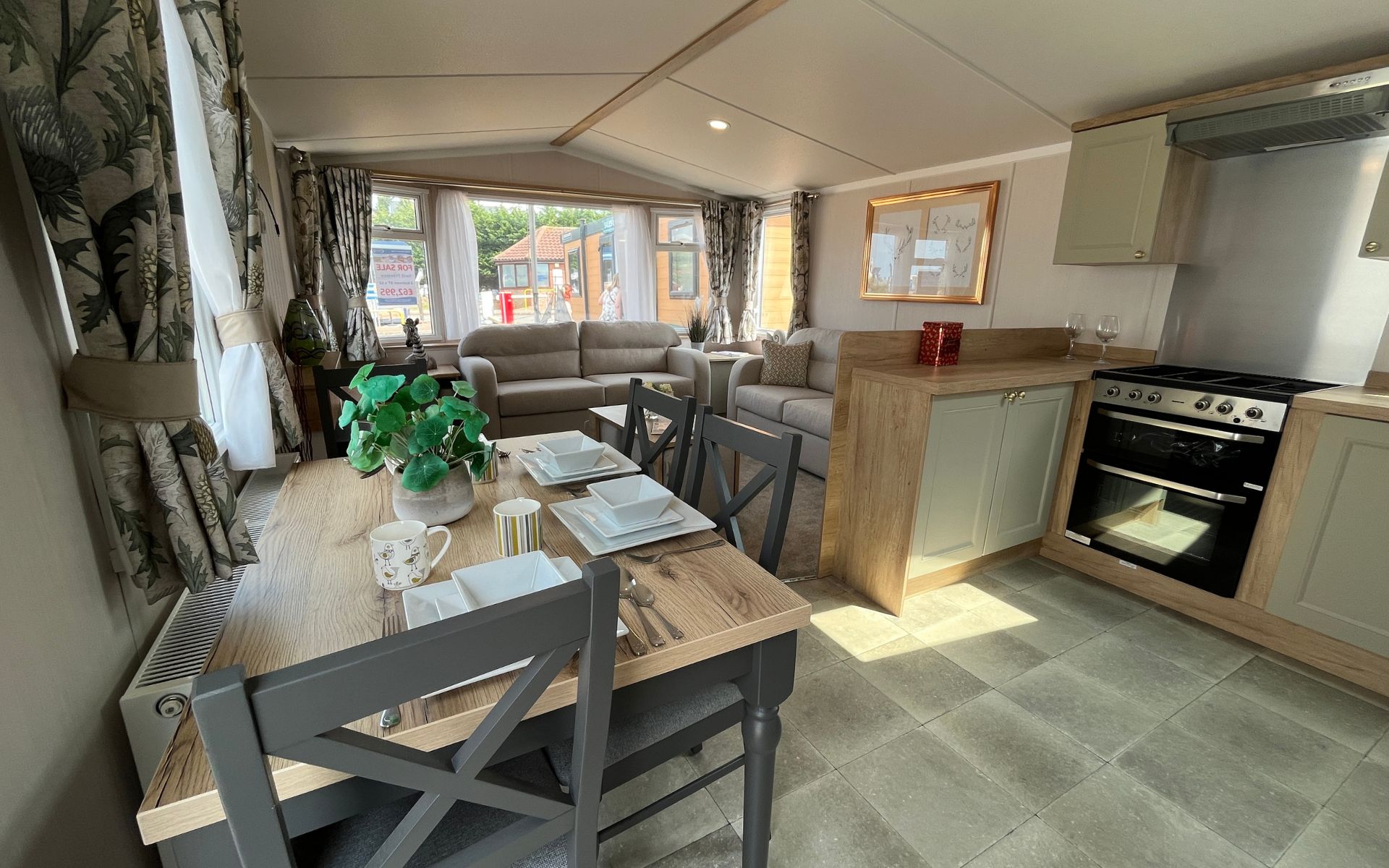From the ankle-biters of the post-War baby boomers, to sultry teenagers and rockabillies, Hunstanton was a place for the whole family to kickback and let off steam during the new age of leisure and tourism of the 1950s. As Searles marks its Platinum Anniversary with a 70th Anniversary Weekend of retro fun, take a tour of the town in the ‘nifty fifties’ and see how much has changed.
School’s in – Smithdon High School, Hunstanton
You can’t fail to miss ‘the glasshouse’, as the locals dubbed it upon its unveiling, as you drive into Hunstanton today. Opened in 1954, the New Brutalist design of Alison and Peter Smithson was the winning entry in a national competition for architecture in 1950, and the couple’s first work as partners, then aged just 21 and 26 respectively. A radical departure from the blueprint of most 1950s schools, and a stark contrast to the Victorian town’s traditional carrstone architecture, the design made extensive use of steel and glass. Originally known as Hunstanton School, and latterly as Hunstanton Secondary Modern School, the school was as important socially as it was architecturally, meeting the needs of the post-war baby boom. In 1980, it became a comprehensive school and was renamed Smithdon High School, after one of the area’s historic districts, not, as many incorrectly believed, a mispronunciation of the architects’ surname, and since 1993 the iconic building has been Grade II listed.
Let the train take the strain – Hunstanton Railway
It was Hunstanton’s chief architect, Henry Styleman Le Strange, who had the vision to build a railway to bring people to his ‘new town’ and, although he sadly died in the week it was opened in 1862, the route brought day trippers and holiday makers in droves during the 50s, who would alight at the terminus to walk the promenade and paddle their feet in the sea. With two long platforms, which could accommodate trains with up to a thousand passengers, from 1949-1960 a direct train ran from Liverpool Street to Hunstanton, before being replaced by a branch line which finally closed in 1969. The 50s saw a peak of passengers, fuelled by the introduction of paid holiday and the growth of the tourism industry, with around half of Britain’s population enjoying a holiday by the sea. While most arrive at Hunstanton by car today, many lament the loss of Hunstanton’s railway station.
Green and pleasant land – Hunstanton Town
Although Le Strange’s vision for Hunstanton as the quintessential resort dates back to 1845, and much of the architecture was designed in a Victorian Gothic Revival style, during the town’s tourism boom in the 50s many of these buildings became a Mecca for visitors seeking traditional seaside entertainment. Alongside the long-gone Sandringham Hotel, The Golden Lion Hotel, sitting on the crest of the Green had been established 100 years before as The New Inn, and did a roaring trade serving holidaymakers who would then stroll down the slope for a walk on the Victorian pier. At its peak, the 830-ft long walkway housed a miniature steam railway, skating rink and small zoo, with an arcade and café at the shoreside. Destroyed in a storm in 1978, leaving only the arcade end, the promenade is sadly now a distant memory. To the east of the Green, the ‘Japanese steps’ – later replaced by today’s ramp – led visitors down to the water’s edge to walk the sands, past the colonnade shelters and under the pier’s lofty legs, to enjoy a dip in the sea. Yet to the west of the promenade, the Blue Lagoon lido was the open-air predecessor of the Oasis, complete with water slides and diving boards, or for those who preferred to stay dry while enjoying the water, the nearby boating lake was a favourite way to spend a leisurely afternoon, rowing laps around the mini island. While the landmarks may be long gone, the timeless appeal of the seaside town still brings holidaymakers to enjoy ‘Sunny Hunny’ today.
After hours – the KitKat Club
As the sun sets, it’s time to turn attention to Hunstanton’s night life and, for a small seaside town, the Kit Kat Club’s reputation as an after-hours venue extended far and wide with people travelling from across East Anglia for a night at the Art Deco building, just off Seagate Road. Set over two floors, the ground floor housed an elegant dining room, while upstairs the ballroom became a vibrant dance hall at the weekend, which regularly attracted up to 1,000 revellers to jive the night away on the sprung, maple floor. In the late 50s, a Sunday night club was formed with performances by local groups including house band The Melodybeats, and the Kit Kat was also a hugely popular weddings and events venue. The club took on several names in later years, notably The Sands and O’Rourke’s Bar, but closed in 1996 and was destroyed in a fire in 1998, before finally being demolished in 2002 and the site built over with a modern block.
Step back in time at Searles
If our walk down memory lane has left you feeling nostalgic, Searles is set to celebrate its 70th anniversary with a weekend of 50s-inspired events and activities to mark the moment this month. Kick off the action on Saturday 15 June with a jive & lindyhop masterclass under the tuition of Val & Graham from ‘Take the Lead’ at 10.30am and 12pm, in preparation for the evening’s entertainment by 50s-inspired crooners, The Era Boys. And, from 12-4pm, we’ll be putting on some family fun with the Searles 70th Street Party with Rockabilly songstress ‘Sarah Mai’, a vintage Punch and Judy show, retro fair games and a birthday cake to mark the moment. If you’re not booked in, what are you waiting for join us for some fantastic 50s fun!









